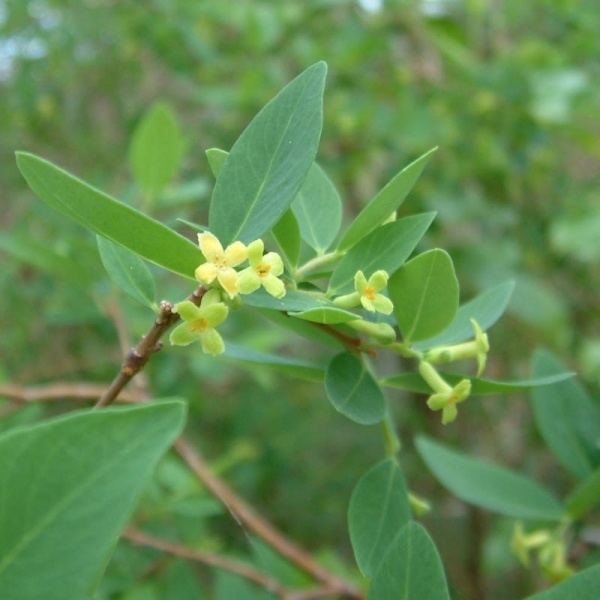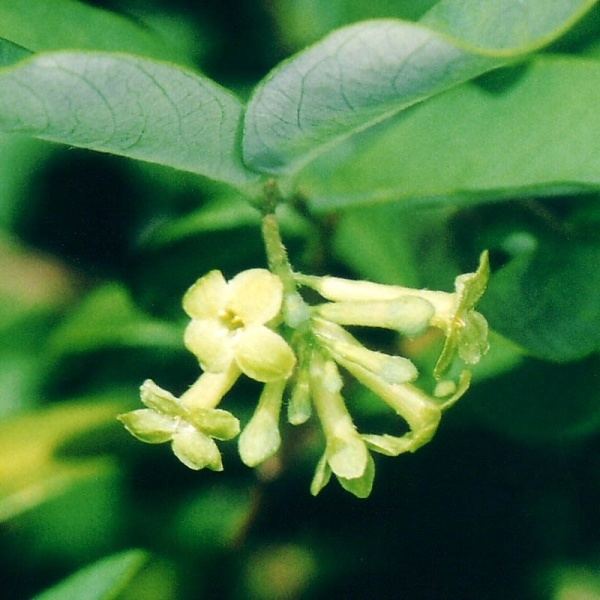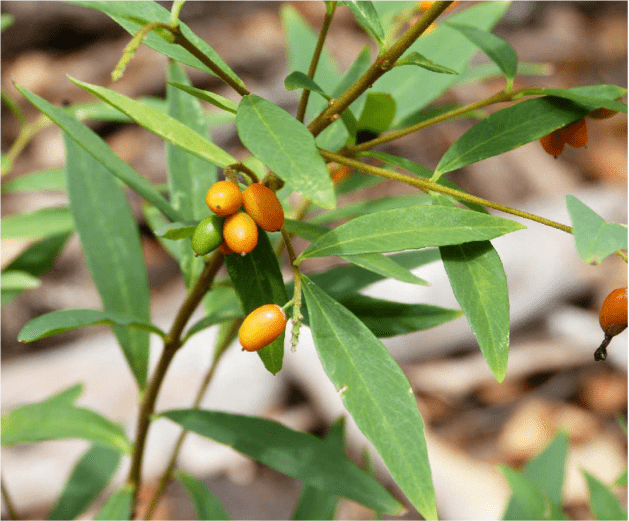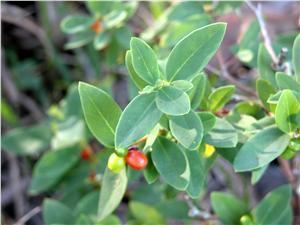Scientific name Wikstroemeia indica | Rank Species | |
 | ||
Similar Wikstroemia, Sweet wormwood, Thymelaeaceae, Artemisia princeps, Mugworts | ||
Octonary ingredients of wikstroemia indica formulations pankaj oudhia s medicinal plant database
Wikstroemia indica (L.) C. A. Mey., also known as tie bush, Indian stringbush, bootlace bush, or small-leaf salago (Chinese: 了哥王; pinyin: liǎo gē wáng) is a small shrub with glossy leaves, small greenish-yellow flowers and toxic red fruits. It grows in forests and on rocky, shrubby slopes in central and southeastern China, Vietnam, India and the Philippines.
Contents
- Octonary ingredients of wikstroemia indica formulations pankaj oudhia s medicinal plant database
- Toxicity
- Medicinal uses
- Chemicals
- References

Toxicity

W. indica is toxic and the poisoning caused by W. indica leads to dizziness, blurred vision, nausea, vomiting, abdominal distension, abdominal pain and diarrhea.
Medicinal uses

It is one of the 50 fundamental herbs used in traditional Chinese medicine. As a traditional Chinese herb, this plant has long been employed as an antipyretic, detoxicant, expectorant, vermifuge, and abortifacient in clinical practice in China.
Chemicals

An alcoholic extract of the plant was found to contain daphnoretin, chrysophanol, myricitrime and rutin. The extract of W. indica displays antimicrobial and anti-inflammatory activities in vitro.
